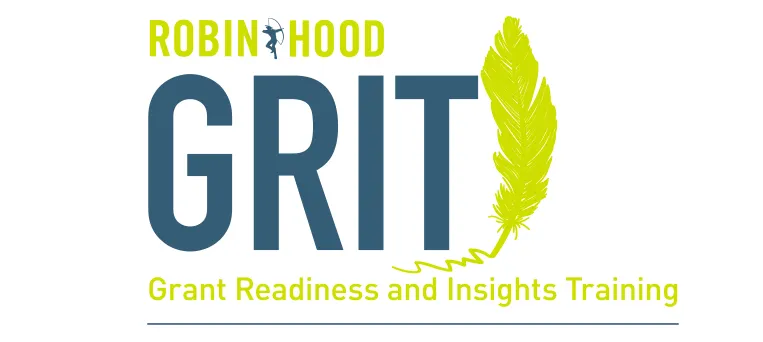Jan 05, 2020
4 Questions Evidence-Based Funders Ask Non-Profits, and How to Answer Them
Four tips from Robin Hood’s Grant Readiness Insights and Training (GRIT) program, which helps equip nonprofits with the tools needed to apply for funding from results-driven, evidence-based funders.
By Suzi Epstein

The nonprofit world has exploded in recent years. In the last decade alone, there has been a 30 percent increase in the number of nonprofit enterprises in the United States. Indeed, in New York state alone, there are roughly 31,000 nonprofits, according to the most recent data from the Bureau of Labor Statistics.
With this breakout in the field, there is fierce competition for resources along with rapid change that affects organizations, government, corporations, philanthropies and constituents everywhere. In recent years, we see ever more clearly that dedicated and worthy service providers must work harder to create a set of “win-win” strategies to attract foundation and public sources of support along with visibility and loyal individual donors. At the same time, at Robin Hood, New York’s largest anti-poverty nonprofit driven by rigorous metrics, we also observe and endorse the need for organizations to demonstrate concrete, measurable and robust results.
Given New York City’s abundance of impactful nonprofits with compelling missions, intriguing programs and committed employees, foundation decision-makers and other leaders in the philanthropic world have a wealth of choices regarding making investments. We in the philanthropic sector are drawn to good ideas, concrete objectives and meaningful program activities, articulate and dedicated leaders, as well as engaged board members and good governance, compliance with regulations, a current audit and solid balance sheet, among other things.
Through its Grant Readiness Insights and Training (GRIT) program, Robin Hood aims to establish the foundation for a more compelling, unique and transparent presentation that enhances the likelihood of positive results for human services nonprofits seeking grants. We clearly see what philanthropic decision-makers and other leaders prioritize in making investments and we impart this information during GRIT’s six day-long sessions.
In these GRIT workshops, Robin Hood brings together a broad range of professionals to focus on a variety of organizational matters that are examined by program officers. We also address various angles of individual and foundation research and proposal writing that allows nonprofit leaders to build uncommonly strong proposals.
However, there are also subtle strengths and weaknesses in many funder applications. While grant proposals may be well-researched and written, they sometimes have deficiencies on important elements that informed and sophisticated funders are seeking. Many of the gaps we encounter can be remedied. Here’s a short list of common questions nonprofits would be well served to consider.
Does the logic model make sense?
A proposal may demonstrate an authoritative needs assessment, but fail to make explicit the activities that will bring about the desired change. Sound logic models are essential. They are basically road maps that keep program teams moving in the same direction so that they can be precise about what they want to achieve and how they do it. For example, an after-school effort designed to improve academics that emphasizes board games and snacks but not tutors will not rally philanthropic support. Nor will a financial literacy program crafted to improve household savings that promotes budget preparation but lacks a banking partner and an emphasis on openings savings accounts and avoiding installment plan purchases and check-cashing services.
Is this program sustainable?
A proposal may proffer a budget with explicit and realistic expenses but vague revenues, at the same time, failing to acknowledge the ongoing need for cash resources. Funders pause at the sustainability conundrum, wondering about the source of ongoing money. For example, a group may seek a two-year funding commitment for half the costs of a new program without stating where the other underwriting is coming from. Or it may be silent on its pursuit of public contracts or other resources for future resources. Without evidence of anticipated contributions, board engagement, development office prowess and diverse revenue streams beyond government agencies in general, many otherwise excellent proposals fail.
Is the budget fully transparent?
A proposal may feature a budget that is not optimally transparent. For example, the personnel section may summarize total salaries and fringe benefits but not spell out the staff roles and compensation aligned with a program. The expenses section may capture direct costs only and omit the administrative overhead needed to accomplish objectives. Worse yet is the budget that low-balls costs and underestimates the resources needed to provide first rate assistance and drive results. For example, an early childhood program without a parent worker, a job training program without a placement coach, or a criminal defense clinic without an investigator on staff are likely to be efforts that cannot produce solid results absent these roles.
What’s missing from the outcomes?
A proposal may feature a compelling and detailed problem description or needs statement, as well as a powerful menu of activities to address a community challenge, but nonetheless pay little attention to identifying outcomes. Funders aim to absorb not just the objective, but also understand the change and the impact that will occur. For example, whether the problem revolves around a neighborhood’s scarcity of fresh and affordable produce, or lack of after-school programs and limited childcare, or astronomical youth unemployment, there should be a forecast, indeed, a goal, about the expected results. Having this stake in the ground helps the funder imagine the benefits of the investment. And importantly, it helps the program itself with development and learning so that it can evaluate its success.
Many proposals have one or more of these flaws. But no matter how kind and gracious a rejection letter may be, such impairments are not usually cited, nor is there a detailed explanation of the foundation’s thought processes.
That is why Robin Hood created its GRIT program in 2015, with support from Bloomberg Philanthropies. Helping nonprofits present critical information about board and leadership talent, tracking and analysis of data, and elements of a budget all help nonprofits better understand, and indeed announce, the answers to critical questions funders might have like “what am I buying and how much does it cost?” or “how do I know I am successful?”
